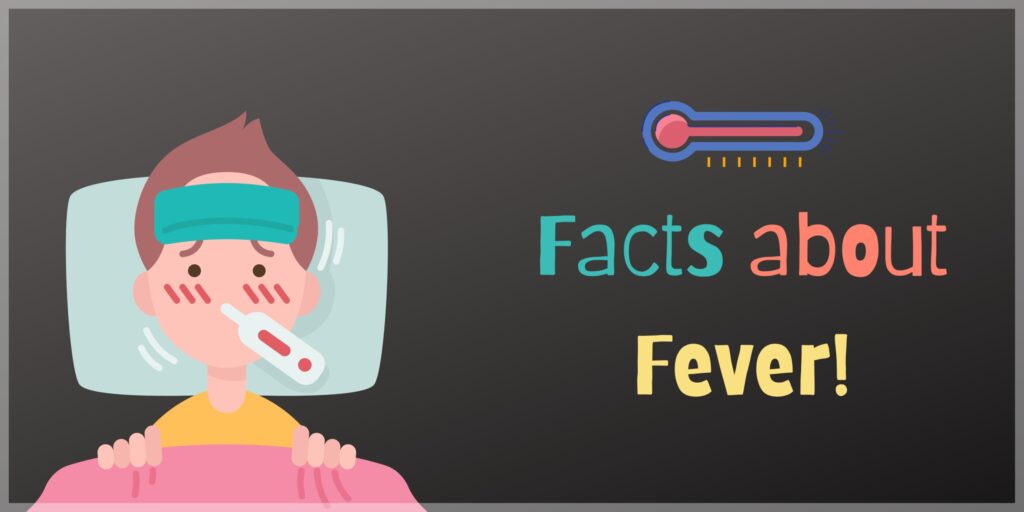Causes of fever
The causes of fever, along with symptoms and treatment, are clearly addressed in this article. When you have a fever, your body temperature goes up for a short time. It is a part of how the immune system responds as a whole in the body. Almost always, an infection is what causes a fever.
Most kids and adults are likely to be upset when they have a fever. But most of the time, this is nothing to worry about. But when it comes to newborns, any level of fever can mean that they have an illness that could be dangerous.
After a few days, the majority of fevers disappear naturally. A fever can be brought down with a number of over-the-counter medicines. But if the fever isn’t making the person feel bad, it’s not always important to treat it. It would help if you were careful about what you eat when you have a fever.
Different people and different times of day have slightly different body temperatures. 98.6 degrees Fahrenheit or 37 C has been thought to be the average temperature for a long time. A mouth thermometer shows the oral temperature; it shows a person has a fever if his or her temperature is at least 100 F or 37.8 C or higher.
Causes of fever
The average body temperature comes from the balance between how much heat the body makes and how much heat it loses. The hypothalamus in the brain, which is also called the “thermostat” of the body, keeps this balance. Even if you are healthy, your body temperature changes a little bit throughout the day. It might be lower in the morning and higher in the afternoon and evening.
The hypothalamus raises your body temperature when your immune system fights an illness. This starts complicated processes that make more heat and keep it from escaping. One way that the body produces heat is by shivering. When you cover yourself with a blanket because you’re cold, you help your body keep its heat.
An infection caused by a virus is one of the causes of fever. Common viral diseases, like the flu, can cause fevers of less than 104 degrees Fahrenheit (40 degrees Celsius). These fevers may help the immune system fight off the disease and are usually not dangerous.
Other causes and symptoms of fever
Some vaccines, like the DTaP, pneumococcal, or COVID vaccine, may cause fever or a high body temperature. Antibiotics and medicines used to treat high blood pressure or seizures could also be to blame.
Heat exhaustion is involved in the causes of fever. Other things to consider are a cancerous or malignant tumour, as well as some inflammatory diseases like rheumatoid arthritis, which causes the lining of your joints, the synovium, to become swollen and painful.
A fever can also make you feel weak, thirsty, angry, and make you lose your appetite. These signs and symptoms may differ depending on what caused the fever. People with fever often have headaches, chills, shaking, and aches and pains in their muscles.
Different thermometers can be used to take a temperature, such as rectal, ear (tympanic), oral, and forehead temporal artery thermometers.
When measuring core body temperature, oral and rectal thermometers are the most accurate. Even though they are convenient, ear or forehead thermometers give less precise temperature readings.
A baby’s rectal temperature is a bit more accurate if you can get it. When you tell your doctor you have a fever, you should tell them both the temperature and what kind of thermometer you used.
Treatment and prevention
You need to consult a doctor straight away if any of the following occur:
- Seizures.
- High fever with a rash.
- Prolonged fever of more than two days.
- Sensitivity to light.
Other signs include dehydration, that is, less urine, sunken eyes, and no tears; you may also have a fever that doesn’t go away after two hours of home treatment or a fever that comes with a stiff neck, confusion, or agitation.
A bacterial infection is included in the causes of fever. Suppose an adult has a fever higher than 105°F (40.5°C) that doesn’t go away with treatment. In that case, it’s a life-threatening medical emergency, and you should call medical emergency services immediately.
Don’t touch your nose, mouth, or eyes. This is where most viruses and germs get into your body and cause infections. If you cough or sneeze, ensure your mouth and nose are covered; teach your kids to do the same. To keep from giving germs to other people, turn away from them and cough or sneeze into your elbow whenever possible.



